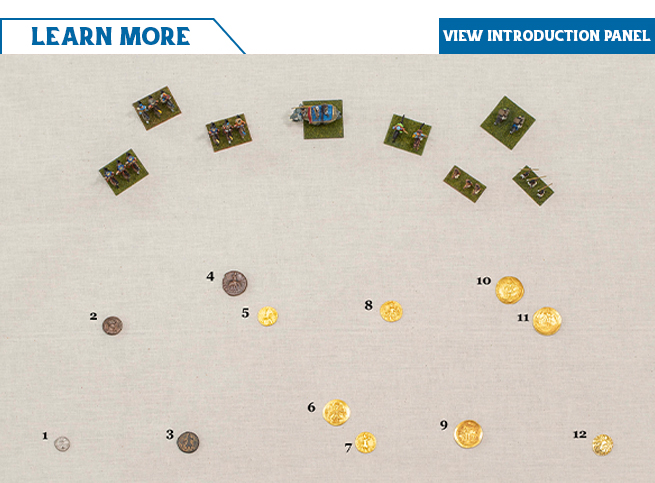
In 1767, French numismatist Joseph Pellerin lamented that a “singular gold coin” was “unknown” to him. The inscriptions were “unintelligible … written [in] the shape of ancient Greek letters, but without … meaning.”
It would be another two centuries before the coin’s secrets were finally revealed.
Pellerin’s unintelligible coin soon joined hundreds of others. Tantalizingly difficult to comprehend, they featured a hodgepodge of languages and a pantheon of Hellenistic, Mesopotamian, Eg yptian, Persian, Z oroastrian and Buddhist gods. Historic texts provided some context, but it was the coins that ultimately revealed a vast inland empire: the Kushans. A super power of its time, the Kushan Empire stretched across today ’s Southern Uzbekistan, Tajikistan, Ky rg yzstan, Af ghanistan, Pakistan and Northwest India.
It began with the westward migr ation of steppe nomads during the second centur y BC. Five displaced tr ibes formed a confederation – the Yuehzhi, which eventually settled in Bactria. One tribe claimed control and established the Kushan D ynast y by the first centur y AD. For the next 300 years, they built and ruled a multicultural empire of Greco-Bactrian, Indian and nomadic peoples – a diversity reflected in coinage.
The first Kushan coins were predominately Greco-Bactrian in st y le, featuring an obverse diademed bust of the first emperor, Kujula K adphises. On the reverse, Nike places a crown of laurels on the mounted emperor. Kujula’s gr andson, V ima K adphises, introduced bilingual gold dinars with unprecedented cultural blending. Gold – predominately used for trade – joined the existing silver and copper coinage based on Greco-Bactr ian models.
By the third century AD, Sassanians had weakened the empire, which eventually fell after steppe nomads invaded the remnants. A united Kushan had protected key S ilk Road trade routes, which partially col lapsed af ter its dissolution, but somewhat recovered under the G upta and Sassanid empires. As memor y of the Kushans faded into the sands of time, coinage preser ved their legac y, rediscovered after more than a millennium.
